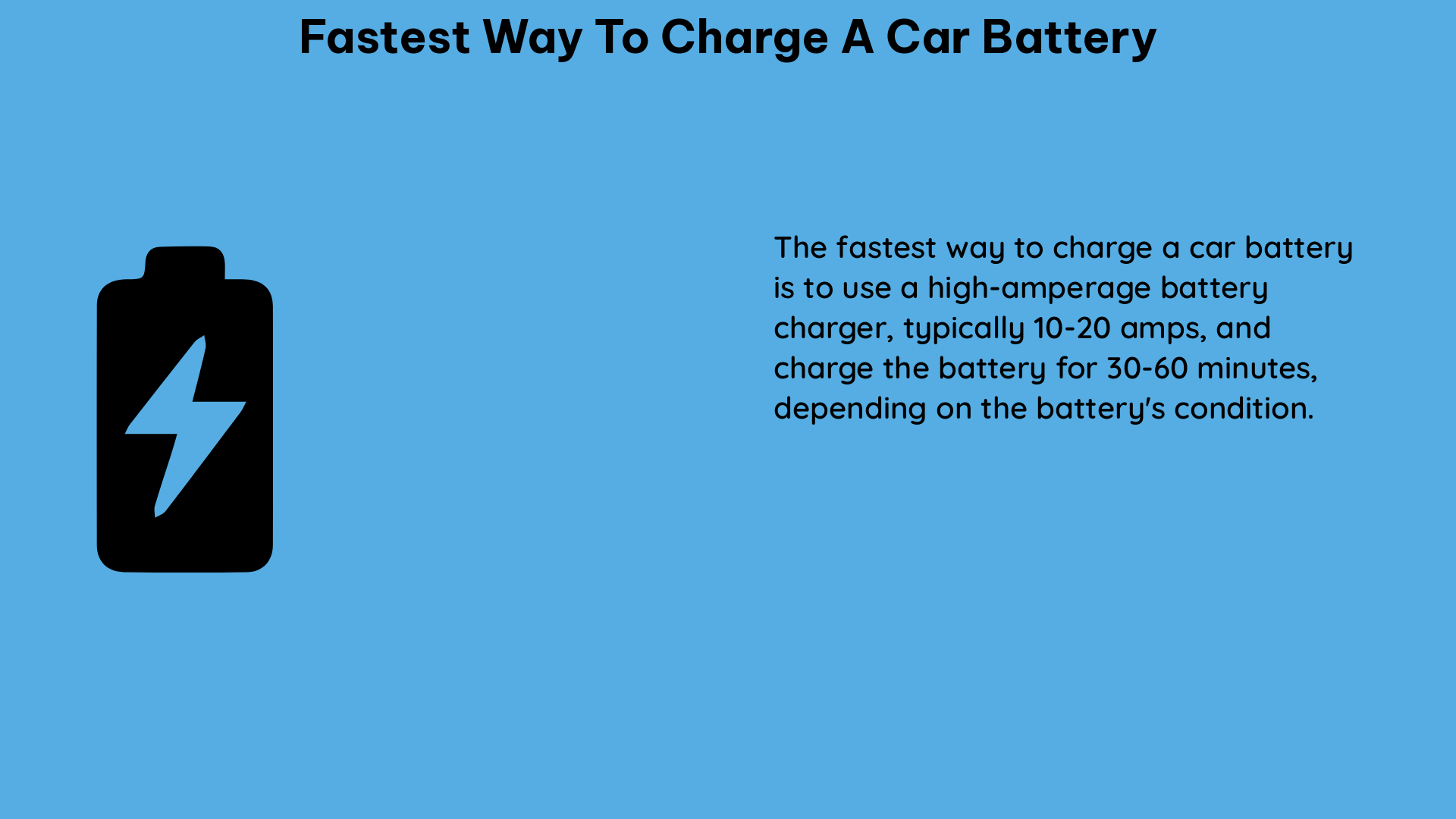The fastest way to charge a car battery is by using a high-current battery charger specifically designed for this purpose. These chargers can force a significant amount of current through the battery, allowing for much faster and more efficient charging compared to relying on the car’s alternator.
Understanding Battery Charging Principles
When charging a car battery with a dedicated charger, the process can typically take 4-8 hours to reach a level sufficient for starting the car a few times. The exact charging time will depend on various factors, including the battery’s size, its overall health, and the desired level of charge.
For example, a dead battery with a 500 amp capacity could take up to 5 hours to charge to 80% under ideal conditions. However, real-world factors, such as power consumption by the engine and other electrical systems, may require longer charging times.
The Limitations of Alternator-Based Charging

It’s important to note that relying on the car’s alternator to charge the battery is not an efficient method. The alternator is primarily designed to power the vehicle’s electrical systems, not to act as a dedicated battery charger. As a result, the charging rate provided by the alternator is typically much slower compared to a purpose-built battery charger.
Choosing the Right Battery Charger
When selecting a battery charger for the fastest charging, it’s crucial to consider the charger’s current output. A charger that can deliver a high current, such as 10 amps, can significantly reduce the charging time.
For instance, a 500 amp battery could be charged to 80% in approximately 2.5 minutes using a 10 amp charger. However, it’s essential to ensure that the charger is used correctly and safely to avoid damaging the battery or causing other electrical issues.
Factors Affecting Charging Time
Several factors can influence the charging time of a car battery, including:
-
Battery Capacity: Larger batteries with higher amp-hour (Ah) ratings will take longer to charge compared to smaller batteries.
-
Battery Condition: A battery in poor condition or with a high internal resistance will charge more slowly than a healthy battery.
-
Charging Current: Higher charging currents (e.g., 10 amps) will charge the battery faster than lower currents (e.g., 2 amps).
-
Charging Stage: The charging process typically involves multiple stages, with the initial stage being the fastest, followed by slower stages as the battery approaches full charge.
-
Ambient Temperature: Colder temperatures can slow down the charging process, while warmer temperatures can improve charging efficiency.
-
Electrical Load: Any electrical load on the battery, such as the vehicle’s electronics or accessories, can reduce the charging rate.
Safely Charging a Car Battery
When using a battery charger, it’s crucial to follow the manufacturer’s instructions and safety guidelines to avoid potential hazards. This includes:
- Ensuring the charger is compatible with the battery’s voltage and capacity.
- Disconnecting the battery from the vehicle before charging.
- Placing the charger in a well-ventilated area, away from any potential ignition sources.
- Monitoring the charging process and disconnecting the charger once the battery is fully charged.
Conclusion
By understanding the principles of battery charging and the factors that affect charging time, you can effectively use a high-current battery charger to quickly and safely restore your car’s battery to full power. Remember to always prioritize safety and follow the manufacturer’s recommendations to ensure a successful and efficient charging process.
References:
- Mechanics Stack Exchange: RPM and Duration to Recharge a Battery
- Interstate Batteries: The Essential Steps to Charge Your Car Battery
- Electronics Stack Exchange: How Long Does It Take to Recharge a Car Battery After Starting

The lambdageeks.com Core SME Team is a group of experienced subject matter experts from diverse scientific and technical fields including Physics, Chemistry, Technology,Electronics & Electrical Engineering, Automotive, Mechanical Engineering. Our team collaborates to create high-quality, well-researched articles on a wide range of science and technology topics for the lambdageeks.com website.
All Our Senior SME are having more than 7 Years of experience in the respective fields . They are either Working Industry Professionals or assocaited With different Universities. Refer Our Authors Page to get to know About our Core SMEs.